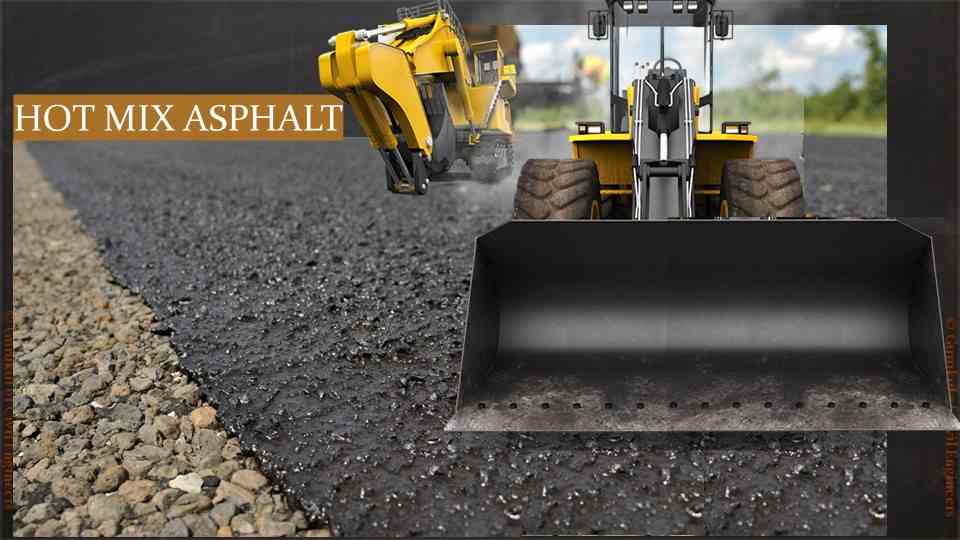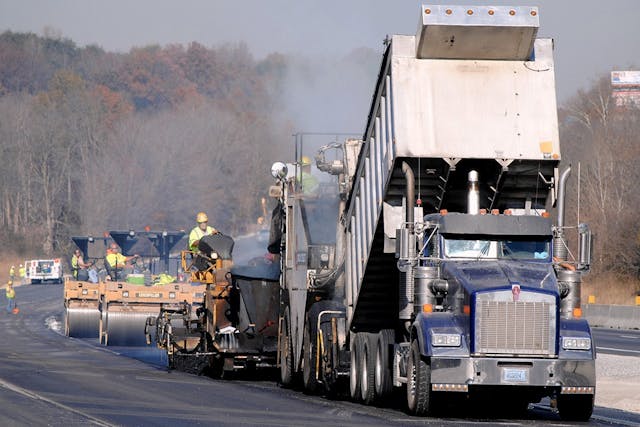Unlocking the Tricks of Hot Mix Asphalt Innovation
Checking out the midsts of warm mix asphalt modern technology discovers a globe where precise formulations and precise processes assemble to form our roads and facilities. The combination of binders, aggregates, and fillers isn't simply a building and construction job however a tactical orchestration of toughness and effectiveness. As we peer into the elaborate dance of parts, a tapestry of strength and sustainability unravels. However what lies beneath this surface area of asphaltic proficiency, and what tricks wait to be unveiled in the world of leading innovations?
Value of Hot Mix Asphalt
Warm Mix Asphalt plays an essential function in contemporary facilities growth due to its durability and cost-effectiveness. As the most typically utilized paving material for roadways, freeways, and car parking great deals, Hot Mix Asphalt provides a variety of benefits that contribute to its significance in building projects.
The longevity of Warm Mix Asphalt stems from its composition, which consists of accumulations, binder, and filler products that are very carefully chosen and mixed to satisfy particular performance demands. This accurate combination causes a solid and adaptable pavement that can sustain constant use without significant wear and tear. Warm Mix Asphalt is 100% recyclable, further boosting its sustainability and ecological benefits. In general, the importance of Warm Mix Asphalt in facilities advancement can not be understated, as it remains to be a cornerstone of modern-day building and construction methods.
Components of Asphalt Mixes
The make-up of asphalt mixes is composed of carefully picked aggregates, binder, and filler products that are vital for attaining details performance needs. Aggregates are the main part of asphalt mixes, supplying stamina and security. These aggregates can be natural, such as crushed rock or crushed stone, or artificial, like recycled products from old pavements. The binder, commonly bitumen or asphalt concrete, holds the aggregates together and gives flexibility and toughness to the mix. The selection of the binder is important as it straight influences the mix's performance in various weather condition problems. Fillers, such as hydrated lime or Rose city concrete, are made use of to enhance the mix's workability and aging resistance. Angled Parking.
The mix and percentage of these parts play a substantial duty in determining the quality and performance of the asphalt mix. Engineers very carefully create the mix to fulfill specific requirements, considering elements like traffic volume, climate problems, and sidewalk lifespan. Proper selection and balancing of accumulations, binder, and fillers are essential for developing sturdy, durable asphalt sidewalks.
Combining and Production Techniques

When the aggregates are chosen, the binder, commonly asphalt concrete, is contributed to bind the products together. The binder's high quality and amount significantly affect the mix's stamina, resistance, and versatility to environmental factors. Additionally, fillers like moisturized lime or Rose city cement may be incorporated to enhance details features of the asphalt mix, such as its workability or moisture resistance.
Throughout manufacturing, the aggregates and binder are heated, generally between 250-325 ° F(121-163 ° C ), to facilitate blending and make sure proper coating of the accumulations. The mixing process has to be detailed to accomplish a homogeneous mixture that advertises the preferred performance features of the asphalt. Different techniques, such as set mixing or drum blending, are utilized to accomplish constant and premium asphalt blends for building jobs.
Elements Affecting Asphalt Efficiency
Factors affecting asphalt performance incorporate a range of variables that influence the sturdiness, longevity, useful link and general high quality of asphalt sidewalks. One essential variable is the high quality of materials utilized in the asphalt mix. The kind and source of accumulations, the binder quality, and the ingredients all play a substantial function in establishing the performance of the asphalt sidewalk. The rank of aggregates is critical as it impacts the mix's security, resistance, and workability to rutting and fracturing.

Environmental problems also influence asphalt efficiency. Temperature variants, moisture seepage, and web traffic lots can all affect the architectural honesty of the pavement. Layout considerations, such as pavement density and drainage, are necessary in ensuring the lasting performance of the asphalt sidewalk. By meticulously thinking about these engineers, contractors and elements can maximize asphalt efficiency and enhance the life span of pavements.
Lasting Practices in Asphalt Modern Technology

In addition, the growth of warm-mix asphalt (WMA) innovations has acquired grip in recent times. WMA permits the production and positioning of asphalt blends at lower temperature levels compared to traditional hot-mix asphalt, causing lowered power usage and greenhouse gas discharges. Additionally, using permeable asphalt mixes can assist reduce stormwater runoff concerns by enabling water to infiltrate via the pavement and right into the ground, promoting natural water purification and charge procedures. By applying these lasting methods, the asphalt industry can add to building a much more environmentally pleasant and resilient framework network.
Final Thought
To conclude, hot mix asphalt innovation plays a crucial role in contemporary framework growth as a result of its resilience and cost-effectiveness. By very carefully stabilizing parts, using correct blending strategies, and taking into consideration numerous variables, designers can develop high-grade asphalt mixes that hold up against rush hour loads and severe weather conditions. Embracing lasting techniques, such as utilizing recycled products and warm-mix innovations, further boosts the ecological kindness of asphalt modern technology.
Blending and production techniques in warm mix asphalt innovation include the precise mix and handling of aggregates, binder, and fillers to develop a high-performance and long lasting asphalt mix.Variables affecting asphalt performance incorporate a variety of variables that impact the longevity, long life, and general quality of asphalt sidewalks. Sustainable techniques in asphalt innovation encompass numerous initiatives intended at decreasing index the ecological effect of asphalt manufacturing and paving processes. By including recovered asphalt pavement (RAP) and recycled asphalt roof shingles (RAS) into brand-new asphalt mixes, the market can considerably reduce the usage of raw products and energy, while additionally reducing garbage dump waste.
WMA permits for the production and placement of asphalt blends at reduced temperatures contrasted to conventional hot-mix asphalt, resulting in lowered energy usage and greenhouse gas emissions.